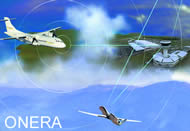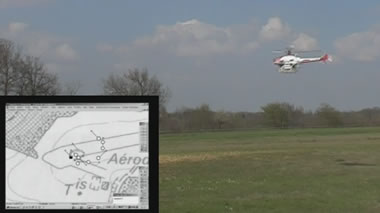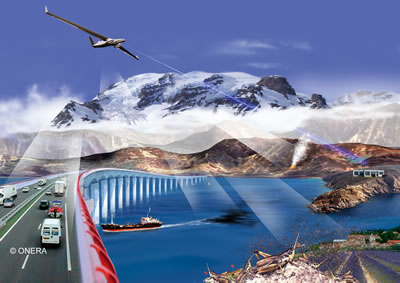If we don't want to drones to be restricted to just a few reserved sectors of air space we have to show that they can be introduced with zero risk into the airspace occupied by piloted aircraft.
Number 41
 Piloted aircraft and drones in the same airspace: a situation that is impossible today... but the regulations may change, and the technology as well. |
Imagine a sky where aircraft, and their pilots, and automatic drones of all shapes and sizes cohabit together. Today, it is absolutely impossible: drones are not permitted to enter the same airspace as piloted aircraft as the regulations governing aviation prohibit it. "The rules of the air defined for general aerial circulation assume the presence of a pilot on board who is responsible for the safe execution of the flight" points out Christel Seguin, research engineer at Onera in Toulouse. Drones move in specific airspace known as "segregated". |
|
However, it would be useful if drones were able to leave their reserved airspace, for example to cross a corridor of air space to be able to carry out surveillance of a catastrophe. So technical means and procedures have to be designed to (1) pilot and control drones safely (the "operational" part), (2) define the rules of certification of these systems (the "navigability" part) and finally (3) develop the qualifications for drone pilots (the "licensing" part). And this has to be done at the international level. "The issues are simultaneously technical, organizational and human" emphasizes Christel Seguin.
Onera's goal with the IDEAS project (Insertion of Drones in Airspace and Safety) is to demonstrate the technical and operational feasibility of the insertion of drones into the general airspace. This demonstration calls on several disciplines: sensors, data processing, control-command technologies, optics, electromagnetism, etc. "We have to provide the scientific proofs that this insertion would be safe" says Christel Seguin. We need to examine all possible eventualities, imagine all breakdowns, envisage remedies, and finally calculate whether the risk is acceptable – in other words, whether the probability of a catastrophic accident is extremely low. These models take into account both technical and organizational components. "Rather than simulating flights and analyzing the results, we ask ourselves: is there a failure involving the loss of the device in unacceptable conditions? Our programs tell us then what configurations could lead to such a failure".
Cécile Michaut, scientific reporter.
|
|






